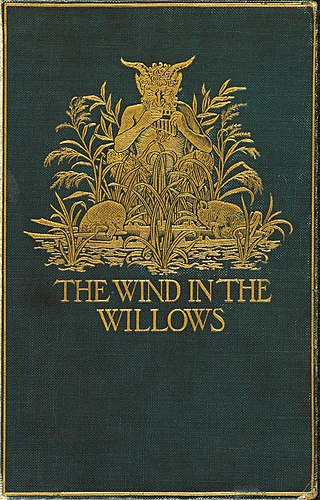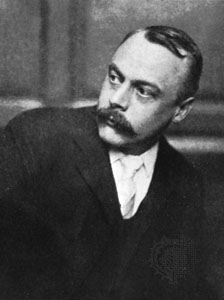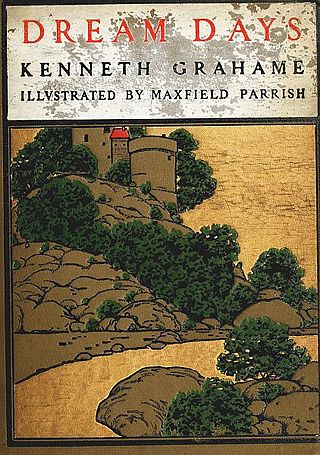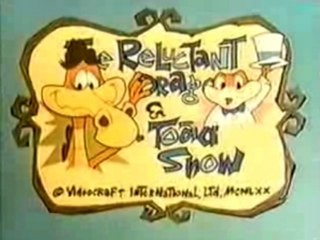
The Wind in the Willows is a classic children's novel by the British novelist Kenneth Grahame, first published in 1908. It details the story of Mole, Ratty, and Badger as they try to help Mr. Toad, after he becomes obsessed with motorcars and gets into trouble. It also details short stories about them that are disconnected from the main narrative. The novel was based on bedtime stories Grahame told his son Alastair. It has been adapted numerous times for both stage and screen.

Kenneth Grahame was a British writer born in Edinburgh, Scotland. He is most famous for The Wind in the Willows (1908), a classic of children's literature, as well as The Reluctant Dragon. Both books were later adapted for stage and film, of which A. A. Milne's Toad of Toad Hall, based on part of The Wind in the Willows, was the first. Other adaptations include Cosgrove Hall Films' The Wind in the Willows, and the Walt Disney films.

Edith Nesbit was an English writer and poet, who published her books for children as E. Nesbit. She wrote or collaborated on more than 60 such books. She was also a political activist and co-founder of the Fabian Society, a socialist organisation later affiliated to the Labour Party.

In a legend, Saint George—a soldier venerated in Christianity—defeats a dragon at Dragon Hill, Uffington. The story goes that the dragon originally extorted tribute from villagers. When they ran out of livestock and trinkets for the dragon, they started giving up a human tribute once a year. This was acceptable to the villagers until a princess was chosen as the next offering. The saint thereupon rescues the princess and kills the dragon. The narrative was first set in Cappadocia in the earliest sources of the 11th and 12th centuries, but transferred to Libya in the 13th-century Golden Legend.
An abridgement is a condensing or reduction of a book or other creative work into a shorter form while maintaining the unity of the source. The abridgement can be true to the original work in terms of mood and tone, capturing the parts the abridging author perceives to be most important; it could be a complete parody of the original or it could fall anywhere in between, generally capturing the tone and message of the original author but falling short in some manner or subtly twisting their words and message to favor a different interpretation or agenda.

In traditional festive legend and popular culture, Santa Claus's reindeer are said to pull a sleigh through the night sky to help Santa Claus deliver gifts to children on Christmas Eve.

David Petersen is an American comic book creator best known for the series Mouse Guard.
"The Dreams in the Witch House" is a horror short story by American writer H. P. Lovecraft, part of the Cthulhu Mythos cycle. It was written in January/February 1932 and first published in the July 1933 issue of Weird Tales.

The Reluctant Dragon is a 1941 American live-action/animated anthology comedy film produced by Walt Disney, directed by Alfred Werker, and released by RKO Radio Pictures on June 27, 1941. Essentially a tour of the then-new Walt Disney Studios facility in Burbank, California, the film stars Algonquin Round Table member, film actor, writer and comedian Robert Benchley and many Disney staffers such as Ward Kimball, Fred Moore, Norman Ferguson, Clarence Nash, and Walt Disney, all as themselves.
The second wave of Walt Disney Treasures was released December 3, 2002. This was the final wave with the tin's individual number embossed on the tin.
The Golden Age is a collection of reminiscences of childhood, written by Kenneth Grahame and first published in book form in 1895, by The Bodley Head in London and by Stone & Kimball in Chicago. The Prologue and six of the stories had previously appeared in the National Observer, the journal then edited by William Ernest Henley. Widely praised upon its first appearance – Algernon Charles Swinburne, writing in the Daily Chronicle, called it "one of the few books which are well-nigh too praiseworthy for praise" – the book has come to be regarded as a classic in its genre.

Dream Days is a collection of children's fiction and reminiscences of childhood written by Kenneth Grahame. A sequel to the 1895 collection The Golden Age, Dream Days was first published in 1898 under the imprint John Lane: The Bodley Head. The first six selections in the book had been previously published in periodicals of the day – in The Yellow Book and the New Review in Britain and in Scribner's Magazine in the U.S. The book is best known for its inclusion of Grahame's classic story "The Reluctant Dragon".
Kenny & the Dragon is a 2008 children's novel by Tony DiTerlizzi. It is based on the story of The Reluctant Dragon. DiTerlizzi named the two protagonists Kenneth and Grahame, after the original story's author Kenneth Grahame. He also includes references to Grahame's other famous work, The Wind in the Willows.

Cosmic Knights is an anthology of themed fantasy and science fiction short stories on the subject of knights edited by Isaac Asimov, Martin H. Greenberg and Charles G. Waugh. The third volume in their Isaac Asimov's Magical Worlds of Fantasy series, it was first published in paperback by Signet/New American Library in January 1985. The first British edition was issued in trade paperback by Robinson in July 1987.
The Reluctant Dragon is a British stop motion animation film created by Cosgrove Hall Films, airing on ITV in 1987. It is based on the story of the same name by Kenneth Grahame.
The Sons of the Dragon is a novella by George R. R. Martin, set in the fictional land of Westeros, the setting of Martin's A Song of Ice and Fire series. The story commences about 270 years before the start of A Game of Thrones (1996). It portrays the death of Aegon I, known as "Aegon the Conqueror", and his two sons Aenys I, his successor to the throne, and Maegor I "the Cruel", in their respective successions to the throne thereafter, and the conflicts faced between them. The story concludes with the death of Maegor, and introduces the groundwork for its sequel, being about the life of his successor and nephew Jaehaerys I "the Conciliator", who reigned 55 years as the ruler of the Seven Kingdoms.
Robin Lawrie is a Scottish-born artist and children's book illustrator. Throughout his career, he has illustrated books by CS Lewis, Prue Leith and Enid Blyton. He has written and illustrated several children's books of his own about building motorways, car mechanics, building kit cars, rally drivers, and mountain biking.

Fire & Blood is a fantasy book by American writer George R. R. Martin and illustrated by Doug Wheatley. It tells the history of House Targaryen, the dynasty that ruled the Seven Kingdoms of Westeros in the backstory of his series A Song of Ice and Fire. Although originally planned for publication after the completion of the series, Martin has revealed his intent to publish the history in two volumes as the material had grown too large. The first volume was released on November 20, 2018.
Inga Moore is an Anglo-Australian author and illustrator of books for children.

The Reluctant Dragon & Mr. Toad Show is a 1970 American animated television series that aired on ABC's Saturday morning schedule. The show features two characters created by British children's writer Kenneth Grahame: the Reluctant Dragon from the 1898 short story of the same name, and Mr. Toad from the 1908 novel The Wind in the Willows. The show was created by Rankin/Bass Productions in New York City, who produced 17 episodes. The show was a flop and canceled midway through its first season, airing from September 12 until December 26, 1970. A year later, ABC aired reruns of the show on Sunday mornings on September 12, 1971. The show is partially lost, as only 8 of the 17 episodes have been recovered as of February 17, 2024.











